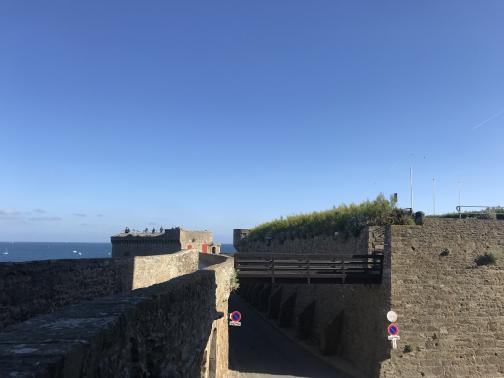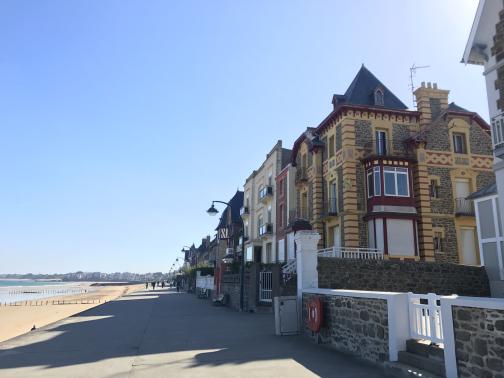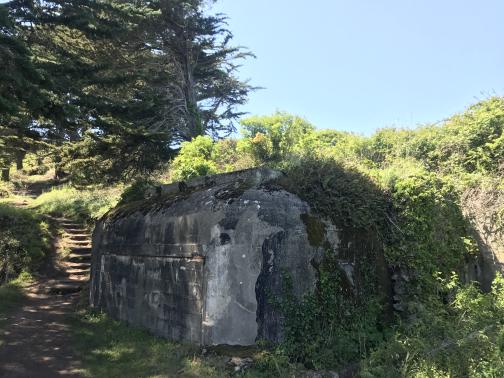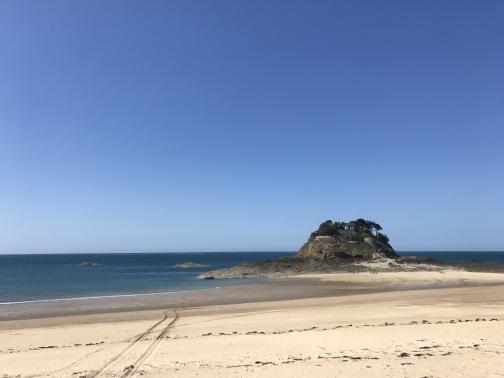pile.org
2017 E5 walk, day 32: Saint-Malo to Pointe du Grouin
48°38′46.2″N
48°42′15.5″N
I got up early and headed back to Saint-Malo. The GR 34 ran along the top of the city’s walls, so (once I found my way up) I circled the city from above, with my first really good view of the English Channel.1

At the northeastern corner of the old city, the trail descended back to the ground. I stopped for bread and pastries at Bakery Maison Hector, and followed the trail out the gate to the east. It led along the Grande Plage (“Great Beach”), and it reminded me intensely of Southern California beaches — a wide boardwalk, with houses jammed together up alongside, each one different than its neighbors.

At various times over the course of the day, the trail went on the sandy beach, which (as before) made me quite anxious: I was having enough trouble with blisters without getting sand into my shoes and socks and grinding against my feet. Fortunately, as before, it turned out that I was able to walk carefully enough that none got into my shoes, or at least it wasn’t enough to cause a problem.
After the Grande Plage, the trail started to climb up and down seafront cliffs, reminiscent of the first days, though not so high above the ocean, and interspersed with beaches. It occasionally struck inland for short stretches; along one of these was Crêperie La Guym’s, where I stopped for lunch.


Several hours and several beaches later, I finally rounded the Pointe du Grouin. Just a short distance after that, I reached the night’s campground, camping municipal de la Pointe du Grouin, through an anonymous gate in the trail-side fence. The campsite was surprisingly busy — I didn’t have trouble finding a space, but more spaces were occupied than not, which I hadn’t experienced for a week and a half. I had a sandwich for dinner, and turned in early after the long day.

-
Of course the French don’t call it the “English” anything; it’s la Manche (“the Sleeve”). ↩︎